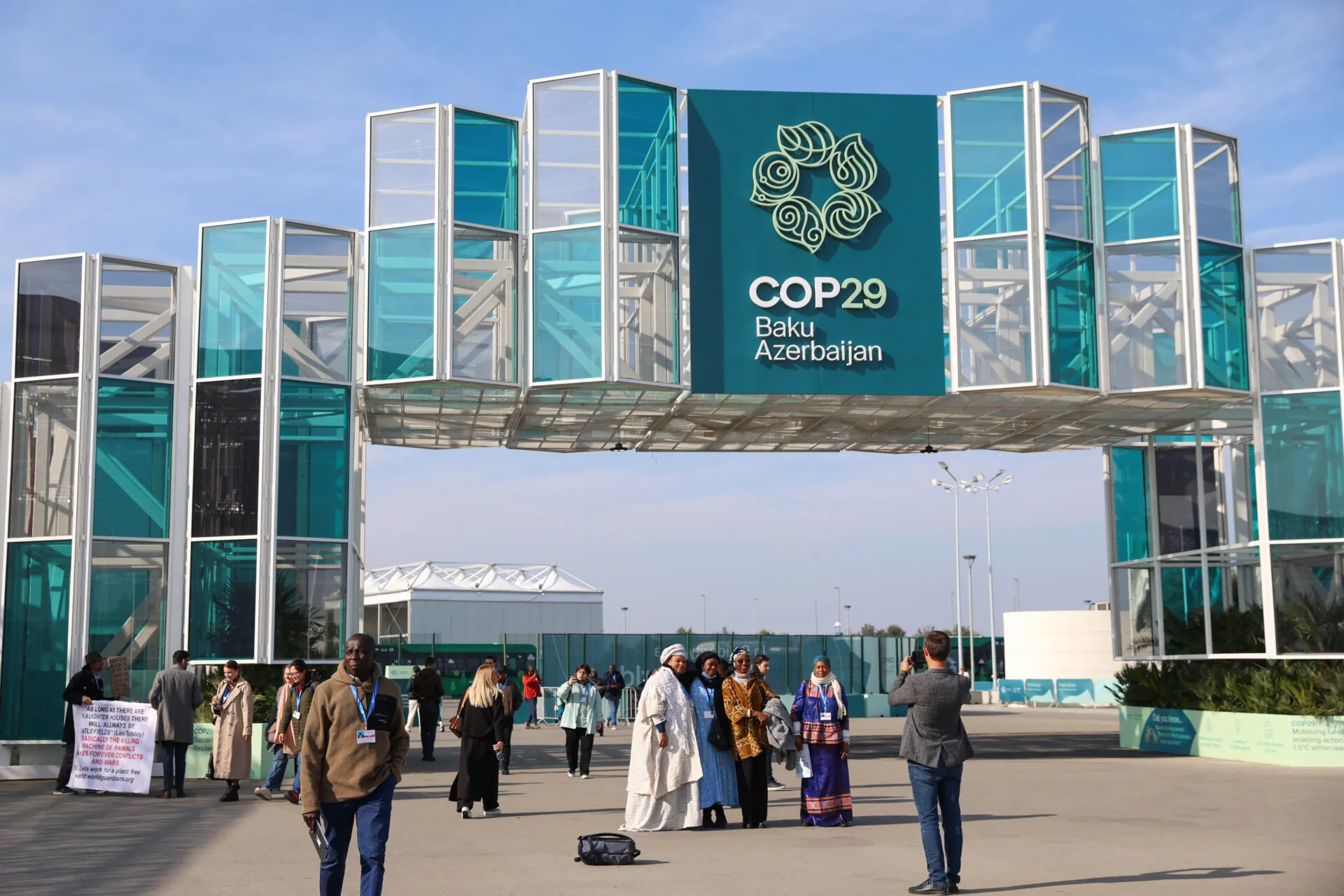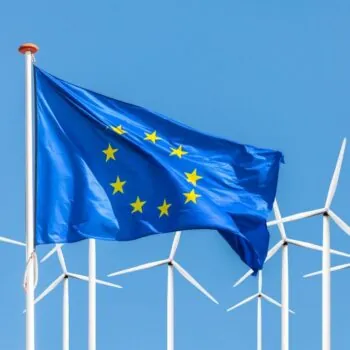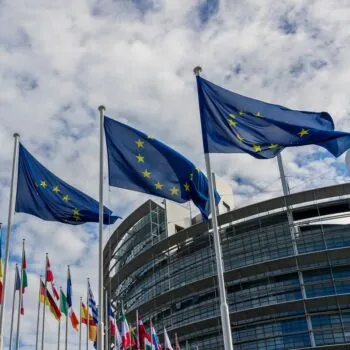COP29 concluded in the early hours of Baku, following two weeks of intense and unpredictable diplomacy. A hard-fought deal on climate finance was finally reached—no small feat amidst worsening geopolitical tensions, domestic, political, and fiscal challenges, and some blockers intent on disrupting the process.
While COP29 showed us that international climate cooperation is still functional and capable of delivering progress despite strong headwinds, the deal agreed falls short of what is needed to address the escalating climate crisis. Going into 2025, this raises the question of how to drive the impact and ambition needed to get back on track and keep 1.5oC within reach.
Our key takeaways
The focus of COP29, dubbed the ‘Finance COP’, was agreeing on a deal to provide finance for climate action in developing countries. In the final deal, developed countries committed to ‘lead’ mobilization of at least $300bn per year, with the decision also calling on all countries to deliver the $1.3trillion per year that is needed by 2035.
In fact, reaching any agreement at all was challenging. Compromise was only enabled by acknowledging the need to strengthen the international response beyond the core $300bn. Constrained fiscal environments and complex politics facing many donor countries made it challenging to agree to a higher figure at COP29. Yet, the outcome provides a launchpad for a better conversation and improvement over time. As UN Climate Change Executive Secretary Simon Stiell: the finance goal is “an insurance policy for humanity.” This approach aligns with the spirit of climate negotiations and the Paris Agreement, where progress is often fragile and incremental. Yet these efforts set the north star and principal direction for collective action.
The commitment to work on a “Baku to Belém roadmap to 1.3T” must consider how to bridge the finance gap through a wider range of sources. The Roadmap must also provide a credible path forward with clear milestones.
A review of the goal will be undertaken in 2030. While scaling up climate finance cannot wait, this review will provide a chance to strengthen international commitment in the coming years. The agreement also importantly encouraged others to contribute on a voluntary basis. For example China, whose historical emissions have now overtaken those of the EU.
Unfortunately, COP29 did not yield progress on mitigation. The deadlock in these negotiations affected broader dynamics and countries’ ability to drive ambition, including on the finance goal. The first week of COP saw negotiations stalled across all three mitigation channels: the UAE dialogue on implementation of the Global Stocktake, the Mitigation Work Programme, and the Just Transition Work Programme. Strong efforts to block any discussion were seemingly aligned with the Azerbaijani COP29 presidency as a leaked text showed that a Saudi negotiator had directly made changes to the UAE dialogue text.
The eventual agreement on the Mitigation Work Programme omitted any reference to Nationally Determined Contributions (NDCs) or the Global Stocktake (GST). The inability to show progress on previous commitments was unacceptable for many progressive parties, and negotiations on UAE dialogue and JTWP were postponed until Subsidiary Body (SBs) sessions in June. The lack of progress demonstrated a collective amnesia regarding the commitments made last year, as well as the influence regressive petrostates have over the negotiations.
However, outside of negotiation rooms, some critical signals drove forward progress on the energy transition. For example, 25 countries plus the European Union, industry and investor groups called for every country to end new unabated coal in their energy systems. Such signals will be essential for fostering collaboration as the energy transition becomes increasingly urgent. We lay out more on energy outcomes in this blog.
Although the final NCQG text did not include a subgoal for adaptation finance, the issue of adaptation had increased political attention. The text on the Global Goal for Adaptation (GGA) was adopted, providing a path forward for the UAE-Belem Work Programme. This included calls to develop indicators for means of implementation of the GGA targets —a significant win for developing countries, as these indicators will help track and support the scaling up of adaptation finance.
The launch of the Baku Adaptation Roadmap creates further opportunities to advance adaptation efforts. Yet, the Adaptation fund remains critically underfunded, and discussions on National Adaptation Plans were stalled.
These matters will be revisited in June, and more broadly, adaptation is poised to be a key issue leading up to COP30 in Belem in 2025. Countries across income groups and geographies will need to continue focusing on adaptation and resilience.
At and around COP29, fewer NDC announcements were made than expected, with only the UAE, UK, and Brazil announcing new goals. Notably, the UK pledged an 81% reduction on 1990 levels by 2035. While the UAE and Brazil demonstrated renewed commitment to decarbonization, their mid-term ambition levels remain debatable.
A promising development, nevertheless, was the emergence of a coalition of countries committing to deliver on their Paris commitments and align their NDCs at least with their long-term net-zero goals. The coalition includes the EU, UK, Canada, Chile, Georgia, Mexico, Norway, Switzerland and the “GZERO” (already net zero/negative) countries of Bhutan, Madagascar, Panama and Suriname. This leadership is vital as over 90% of global emissions are now covered by national net-zero goals, which, if fully realized, would limit warming to 1.5-2°C. Falling clean technology costs enable countries to enhance targets at reduced economic costs. For developing nations, robust climate finance and economic partnerships are crucial to inspire confidence in adopting ambitious goals.
The February 2024 deadline for updated NDCs presents an opportunity to raise ambition through new 2035 emissions reduction pledges, stronger 2030 targets, and accelerated net-zero timeframes. We must see other countries – from China to India, the US to South Africa and the broader EU – coming out with strong NDCs very soon. Major economies must demonstrate that decarbonization will remain a priority. These NDCs are not merely technical exercises but can help drive prioritization, policy commitment, and investments to bolster transformational change. The G20 is particularly crucial, and South Africa must bolster momentum via its G20 presidency.
For all its flaws, the deal reached was an important signal for the staying power of multilateralism and the Paris Agreement, particularly given the uncertain circumstance the world finds itself in. It took place following: a year of elections where incumbent governments by and large lost out; a U.S. election with tremendous consequences for global dynamics including international climate cooperation and action; in an increasingly multipolar world; and where domestic politics and economics pull political focus. Against these developments, it is an important signal that world leaders are increasingly redefining climate action strategically, not only as a global public goods and international cooperation issue but also as one of national economic and security interests.
Many conversations in Baku focused on these shifting dynamics and what that portends for next year (including upcoming potential leadership changes in other countries such as Germany, Australia, and Canada). At COP29, partnerships and diplomacy were utilized and stretched in different ways, as the UK and Brazil played important roles during the final days and hours of the negotiation, and other developing countries such as Colombia, Kenya, and small island states were also instrumental in pushing for action and brokering the last-minute deal. It will be essential to determine how these diplomatic and geopolitical positions play moving forward, including the role of the EU, China, and the UK alongside the G20 and developing countries.
Where we need to see progress in 2025
2025 will be a critical moment for further climate cooperation and ambition. The focus for climate diplomacy is already shifting from setting targets to implementing and delivering results amidst a fractured global backdrop, where leadership and commitment to the next steps are not yet entirely in focus. With peak global emissions by 2025 and a decline of around 60 per cent by 2035 necessary to keep 1.5°C within reach, the stakes could not be higher and there is no time to lose.
Brazil as COP30 Presidency can set a transformative agenda that matches the urgency of the climate crisis. Current commitments put us on a dangerous path to 2.7°C, and the new collective commitments, on their own, are likely to fall short of what’s needed to close this massive ambition gap.
COP30 must provide a clear pathway to respond to this expected mitigation shortfall so that the new NDCs set the floor, not the ceiling, for climate ambition over the next decade. A set of strategies to close the ambition gap must also be developed:
- Finance: Brazil must lay the groundwork for scaling up climate finance via the Baku to Belem Roadmap to unlock greater mitigation ambition in developing countries. The Brazilian Presidency must work over this next year to demonstrate a clear pathway forward for mobilising funds through, for example, international financial system reform and innovative sources of finance (e.g., levies on shipping, aviation, fossil fuels, and wealth).
- Sectoral Action: the Brazilian presidency must also work with others to accelerate sectoral decarbonisation efforts by appropriately leveraging the initiatives launched over the past decade (e.g. the Powering Past Coal Alliance), ensuring their coherence and maximising overall impact. Initiatives like the Global Clean Power Alliance, co-launched by the UK and Brazil at COP29, provide a strong foundation for accelerating the global energy transition. Similar efforts in other sectors, including buildings, industry, forests and agriculture, are needed to support greater transparency and accountability around commitments and building pressure to strengthen them.
- Adaptation: Brazil must ensure the Baku to Belem Roadmap includes a plan for scaling up finance for adaptation. Brazil must drive the UAE-Belem Work Programme to finalise a robust set of indicators that enable finance flows to adaptation and embed it in development planning. It must also drive coalitions to ensure adaptation rises up the political agenda and gets the attention it needs.
- Non-State Action: Brazil’s Presidency can support the real-world change needed to empower cities, states, businesses, and investors to scale up climate efforts through initiatives like the Marrakech Partnership and its Race to Zero. One example of how Brazil can support progress in this area is how national policy reforms can incentivize even greater emissions reductions by these non-state actors.
To ensure COP30 delivers, building support across all venues and partners is critical. This includes Canada and South Africa as G7 and G20 Presidencies, who must prioritize climate action on NDCs and progress on the finance and energy transition. Key capitals must engage at both political and technical levels. Australia and the Pacific islands, as likely the COP31 Presidency, must build continuity and ensure the critical voices of Small Island States are heard. All Parties must build coalitions and partnerships more intentionally across critical sectors and co-lead these to foster trust, understanding, and build bridges early on. Leaders must drive progress and ensure climate action remains at the top of a full agenda, and climate diplomacy remains a national and foreign policy imperative.
COP29 underscored both the delicacy and resilience of multilateralism. As we look to COP30 in Belem, there is a critical opportunity to lead the way with a bold and transformative agenda. The road ahead demands unwavering commitment, innovative solutions, and global collaboration to turn ambition into action and maintain trust in the Paris Agreement and its functionality to deliver.


